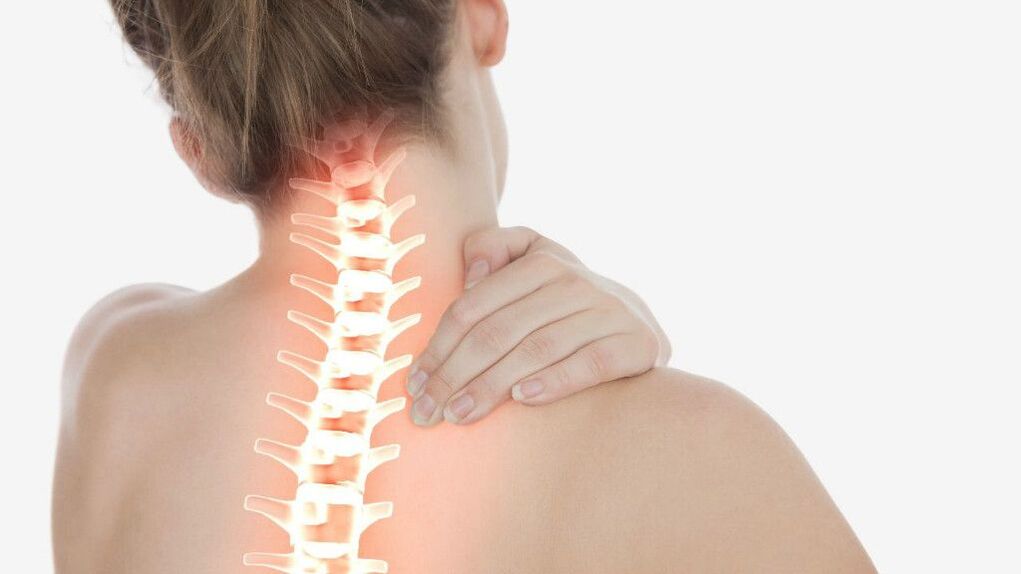Osteochondrosis of the cervical spine is a degenerative and dystrophic disease that affects the intervertebral disks of the door.This pathology is the most common spine pathology.

Symptoms of the disease
As the disease advances, characteristic symptoms appear.Include the following manifestations:
- Weakness
- Dizziness
- Headache
- Noise in the ears
- Change the vision organ function (reduction of its weight, flickering flies in front of the eyes)
- Increased sensitivity in hand
- The stiffness of the hand
- Then the person can generally stop moving with his hand
- A feeling of stiffness in the joints of the upper limbs
- Crumb in neck
- A feeling of stiffness and pressure in chest.
The causes of the disease
The main causal factors of osteochondrose cervical spine are as follows:
- Small mobility of the door, which leads to the fact that the interverter disc loses liquid, also leads to the loss of cartilage elasticity
- Burdened heredity that determines the strength of the strength of the intervertebral disk
- Microtraumatization of cervix with sharp curves, head tilting, etc.
- Metabolic disorders that negatively affect the state of cartilage on the intervertebral disk.
Diagnostics
The diagnostic search for the osteochondrose of the cervical spine includes the following studies:
- X -ray
- Computer Tomography
- Nuclear-magnetic resonance
- Electromyography.
Each of the above studies carries certain diagnostic information.The first three allows you to identify changes directly into your spine, characteristic of osteochondrose.The latest study allows you to diagnose the complications of osteochondrose, which consists of damage to nerve troops.
The X -Ray review is performed in various planes, and the sights are also performed for the more accurate detail of characteristic changes.This study reveals calcinated in the ligamental spine apparatus, changing the amount of intervertebral disks, the deformation of the cervical region, etc.
Computer tomography and nuclear magnetic resonance imaging allow you to get the most reliable data, so use is recommended in complex diagnostic cases.
Electromiography is studying conductivity in nervous fibers, which is very often with osteochondrose of the spine are summarized.This is due to the fact that the conditions for compression of nerve roots are created with reducing the height of intervertebral discs.Therefore, such clinical symptoms appear as increased sensitivity, paresis and paralysis.
Complications
The absence of timely treatment of the osteochondorosis of the cervical spine can lead to the development of the following complications:
- Paralysis and paresis of upper limbs on one or two sides
- Ischemic brain move.
Treatment treatment
Objectives that Osteochondrosis treatment meets the following:
- Reduction of severity of pain syndrome
- Prevention of the progress of pathological changes.
The following methods are used to implement these goals:
- Manual therapy is done
- Acupuncture
- Medical physical education
- Gymnastics
- Swimming.
The purpose is shown in parallel:
- Chondroprotectors, which increase the resistance to cartilage and allow to recover
- Non-steroidal anti -infalmal medications that reduce the weight of pain.
Unique methods of treatment
- Applied Kinesiology
This is the method of diagnosing and treatment of spinal disease, joints and nervous system based on muscle test.The doctor is studying the condition of tissues and organs with the help of hands.
- Treatment of leeches
Together with crowded leeches, about 100 biologically active components arrive in human blood.This helps clean the blood vessels, eliminates blood clots and interferes with their formation.
- Reflexology
Acupuncture helps to cure osteochondrose, radiculitis and other diseases of spine and joints.Procedures relieve pain, cure the body and strengthen immunity.
Risk group
In the risk group, the following categories must include:
- With a burdened heir
- Driver
- Having background pathological processes.
Prevention
Preventive measures to prevent osteochondrose spine, are as follows:
- Correct posture during sitting
- Alternating load and rest
- Exclusion of weight weight (in this case is better to give advantage to backpack)
- Regular fundamental medical examinations for neurologists and orthopedists for early detection of osteochondrose of the cervical spine.
Diet and lifestyle
In case of osteochondrose, certain adjustments to lifestyle needs to be performed.They are as follows:
- Treatment of the background pathological process, which led to osteochondrose if discovered
- Exception of weighting
- Normalization of diet - Fasting, fried, acute, saline, increase plant fiber and hondroitine products (jelly, jelly) in a diet
- A sufficient pace of physical activity.



















